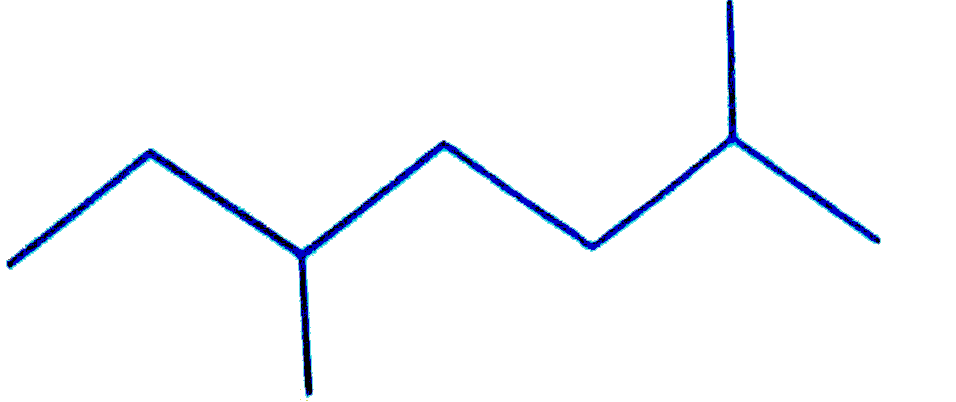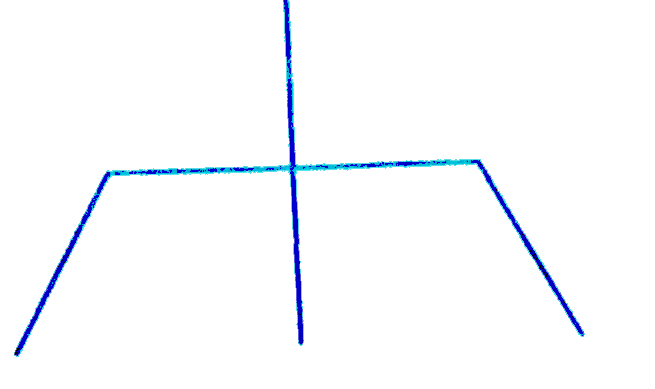Which of the following alkanes can be synthesized by the Wurtz reaction in good yield ?
(CH3)2CH−CH2−CH(CH3)2
(CH3)2CH−CH2−CH2−CH(CH3)2
CH3−CH2−C(CH3)2CH2−CH3
(CH3)3C−CH2−CH2−CH3
The correct Answer is:B
To determine which alkane can be synthesized by the Wurtz reaction in good yield, we need to consider the nature of the Wurtz reaction and the symmetry of the alkanes involved.
1. Understand the Wurtz Reaction:
The Wurtz reaction involves the coupling of two alkyl halides in the presence of sodium metal (Na) and an ether solvent. This reaction typically produces higher alkanes.
2. Identify Symmetric Alkanes:
For the Wurtz reaction to yield a good amount of product, the alkyl halides used should ideally be symmetric. This means that both alkyl halides should be the same or capable of forming the same alkane when they couple.
3. Analyze the Given Options:
Let's assume we have four options (A, B, C, D) for the alkanes. We need to evaluate each option to check if it is symmetric or not.
- Option A: Not symmetric.
- Option B: Symmetric.
- Option C: Not symmetric.
- Option D: Not symmetric.
4. Select the Correct Option:
Since only option B is symmetric, it is the alkane that can be synthesized by the Wurtz reaction in good yield.
Conclusion:
The correct answer is Option B.
The Wurtz reaction involves the coupling of two alkyl halides in the presence of sodium metal (Na) and an ether solvent. This reaction typically produces higher alkanes.
For the Wurtz reaction to yield a good amount of product, the alkyl halides used should ideally be symmetric. This means that both alkyl halides should be the same or capable of forming the same alkane when they couple.
Let's assume we have four options (A, B, C, D) for the alkanes. We need to evaluate each option to check if it is symmetric or not.
- Option B: Symmetric.
- Option C: Not symmetric.
- Option D: Not symmetric.
Since only option B is symmetric, it is the alkane that can be synthesized by the Wurtz reaction in good yield.
The correct answer is Option B.
Topper's Solved these Questions
- BOOK - A2ZCHAPTER - HYDROCARBONSEXERCISE - Chemical Properties Of Alkanes97videos
HYDROCARBONS
- BOOK - A2ZCHAPTER - HYDROCARBONSEXERCISE - Methods Of Preparation Of Alkanes31videos
HYDROCARBONS
- BOOK - A2ZCHAPTER - ENVIRONMENTAL CHEMISTRYEXERCISE - Section D - Chapter End Test30videos
ENVIRONMENTAL CHEMISTRY
- BOOK - A2ZCHAPTER - HYDROGENEXERCISE - Section D - Chapter End Test30videos
HYDROGEN
Similar Questions
Knowledge Check
- Question 1 - Select One or More
Which of the following alkanes cannot be synthesised by the Wurtz reaction in a good yield ?
A(CH3)2CH−CH2−CH(CH3)2B(CH3)2CH−CH2−CH2−CH(CH3)2CCH3−CH2C(CH3)2CH2CH3D(CH3)2C−CH2−CH2−CH3 - Question 2 - Select One or More
Which of the following alkanes cannot be synthesised by wurtz reaction?
A B
B C
C D
D
- Question 3 - Select One
Which of the following alkanes can be synthesised in good yield by the Wurtz reaction ?
A(CH3)2CH−CH2−CH(H3)2B(CH3)2CH−CH2CH2−CH(CH3)2CCH3CH2−C−(CH3)2−CH2CH3D(CH3)3C−CH2−CH2−CH3
Which of the following alkane cannot be prepared from Wurtz reaction
View SolutionWhich of the following alkane can be obtained in good yield by the Wurtz reaction?
View SolutionWhich of the following alkane cannot be prepared from Wurtz reaction
View SolutionWhich of the following alkene cannot be produced by Wurtz reaction?
View SolutionWhich of the following alkane cannot be made in good yield by Wurtz reaction?
View Solution

